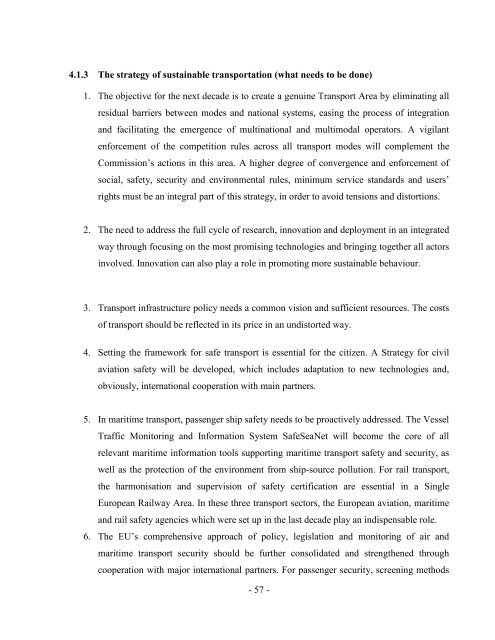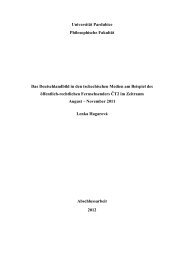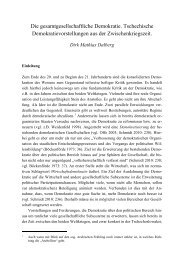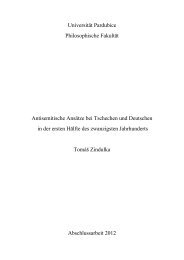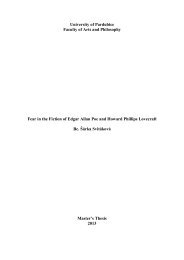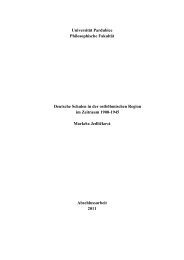University of Pardubice Jan Perner Transport Faculty Transport and ...
University of Pardubice Jan Perner Transport Faculty Transport and ...
University of Pardubice Jan Perner Transport Faculty Transport and ...
Create successful ePaper yourself
Turn your PDF publications into a flip-book with our unique Google optimized e-Paper software.
4.1.3 The strategy <strong>of</strong> sustainable transportation (what needs to be done)<br />
1. The objective for the next decade is to create a genuine <strong>Transport</strong> Area by eliminating all<br />
residual barriers between modes <strong>and</strong> national systems, easing the process <strong>of</strong> integration<br />
<strong>and</strong> facilitating the emergence <strong>of</strong> multinational <strong>and</strong> multimodal operators. A vigilant<br />
enforcement <strong>of</strong> the competition rules across all transport modes will complement the<br />
Commission’s actions in this area. A higher degree <strong>of</strong> convergence <strong>and</strong> enforcement <strong>of</strong><br />
social, safety, security <strong>and</strong> environmental rules, minimum service st<strong>and</strong>ards <strong>and</strong> users’<br />
rights must be an integral part <strong>of</strong> this strategy, in order to avoid tensions <strong>and</strong> distortions.<br />
2. The need to address the full cycle <strong>of</strong> research, innovation <strong>and</strong> deployment in an integrated<br />
way through focusing on the most promising technologies <strong>and</strong> bringing together all actors<br />
involved. Innovation can also play a role in promoting more sustainable behaviour.<br />
3. <strong>Transport</strong> infrastructure policy needs a common vision <strong>and</strong> sufficient resources. The costs<br />
<strong>of</strong> transport should be reflected in its price in an undistorted way.<br />
4. Setting the framework for safe transport is essential for the citizen. A Strategy for civil<br />
aviation safety will be developed, which includes adaptation to new technologies <strong>and</strong>,<br />
obviously, international cooperation with main partners.<br />
5. In maritime transport, passenger ship safety needs to be proactively addressed. The Vessel<br />
Traffic Monitoring <strong>and</strong> Information System SafeSeaNet will become the core <strong>of</strong> all<br />
relevant maritime information tools supporting maritime transport safety <strong>and</strong> security, as<br />
well as the protection <strong>of</strong> the environment from ship-source pollution. For rail transport,<br />
the harmonisation <strong>and</strong> supervision <strong>of</strong> safety certification are essential in a Single<br />
European Railway Area. In these three transport sectors, the European aviation, maritime<br />
<strong>and</strong> rail safety agencies which were set up in the last decade play an indispensable role.<br />
6. The EU’s comprehensive approach <strong>of</strong> policy, legislation <strong>and</strong> monitoring <strong>of</strong> air <strong>and</strong><br />
maritime transport security should be further consolidated <strong>and</strong> strengthened through<br />
cooperation with major international partners. For passenger security, screening methods<br />
- 57 -


